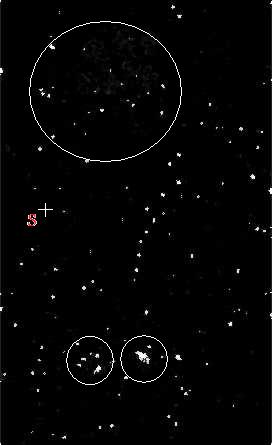Copyright 2008 Starry Mirror



The
TM
Astronomy From West Virginia
S PERSEI FADES INTO THE EVENING TWILIGHT - MARCH 30, 2009
BRIDGEPORT, WV (S-M) - With the approach of Spring, we have been nearing the end of the observing season for one of our favorite variable stars, S Persei. We expect to keep monitoring the star until it slips into the twilight glow in the middle of April.
S Persei is one of the best variable stars to monitor with a medium-sized telescope. It is located just a couple of degrees from the famous Double Cluster of stars in Perseus, and there is a line of fairly bright stars which can lead us from the clusters to S Persei. Once the star has been found, returning to it on later nights is easy. And, just a little further north is the large open cluster Stock 2, which is twice the size of the full Moon. All this makes S Persei one of the easiest variable stars to find.
What's more, the variable has a range of magnitudes 8 to 12, which means that it never disappears in a medium-sized telescope as it goes about its cycle. It's a semi-regular variable, and a supergiant star, with estimates of its size running as large as 1000 times the Sun's diameter. It tends to have a cycle of around 800 days. In this late March of 2009, the star is on the upswing, and we saw it at about magnitude 9.8 a few nights ago.
Though S Persei will soon be lost in the evening twilight glare, it won't be gone for long. Since it is located quite far in the north between Perseus and Cassiopeia, it never dips far below the northern horizon, and in just a few weeks we will be able to start monitoring it again, low in the northeast before dawn. - GW

Variable star S Persei is located between the Double Cluster, near bottom, and the open cluster Stock 2.